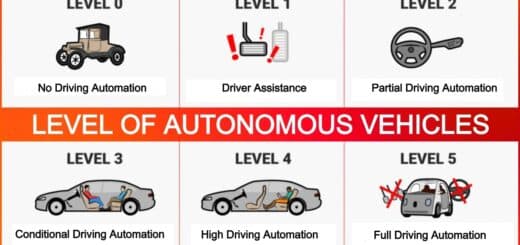10 Parts of Tow Truck – Explained with Complete Details [with Pictures & Names]
![10 Parts of Tow Truck - Explained with Complete Details [with Pictures & Names]](https://engineeringlearn.com/wp-content/uploads/2023/03/Parts-of-Tow-Truck-1024x539.jpg)
Introduction
10 Parts of Tow Truck – Explained with Complete Details [with Pictures & Names]: – It’s a fact that the vast majority of people have an understanding of the function of tow trucks, and an overall understanding of the parts required and the role those parts play an important role in the performance of tow trucks.
What are Tow Trucks?
Tow trucks are exciting vehicles. From far off, it appears the driver makes a couple of connections and the tow truck is good to go. Tow trucks are also complex. Tow trucks come in different styles to serve various applications, like pulling or hauling a wrecked vehicle to a junkyard or transporting a disabled vehicle to a mechanics shop. Ordinarily, tow truck companies depend on a couple of types of tow trucks for their day-to-day tasks. Tow trucks work by fitting in the middle of between the wheels of a vehicle and getting the vehicle securely to the truck with pins.
Parts of Tow Truck
1. Boom: ( Parts of Tow Truck )
A boom, in combination with a winch, is the defining part of a tow truck that permits it to recuperate vehicles from places that are not effectively accessible. A few booms are fixed, however, others rotate or turn making what is normally known as rotator Tow trucks. For the most part, tow trucks have one or two booms, which might be operated either mechanically or using pressurized water. Mechanical booms are raised and brought down with the aid of a manual winch.
2. Winches: ( Parts of Tow Truck )
A winch is a gadget for winding and unwinding cable that is utilized to pull, raise or lower the load or sling free of the ground. To assist with keeping the cable from pulling loose from the winch drum and dropping the load, consistently maintain at least three to five wraps of cable on the drum, or the number of wraps the winch manufacturer suggests. The winch cable is regularly routed over the end of the boom and afterward down to a sling or tow bar.
3. Tow Sling / Tow Bar: ( Parts of Tow Truck )
The tow sling is affixed around either an axle on the vehicle or the frame and afterward the boom and winch lift the vehicle. The tow bar connects or interfaces the tow truck and the vehicle being recovered with the utilization of heavy, rubber-treated mats. This permits the truck to then be towed on the other axle that isn’t fixed to the sling. It is significant that the tow sling and tow bar are not ideal recovery techniques for every single vehicle.
4. Rear Outriggers: ( Parts of Tow Truck )
Outriggers effectively help to cover a more prominent area, while increasing the lift limit or capacity that is achievable by the tow trucks. These metal legs are likewise used to assist with stabilization during heavy-duty recovery jobs. Contingent upon your vehicle, these outriggers can be customized in size, shape, and material to ensure they are at peak performance when required.
5. Wheel-Lift: ( Parts of Tow Truck )
The wheel lift fits under the wheels on either the front or back of the vehicle. The vehicle is then lifted or taken off of the ground, and it will in general be towed. The size and nature of the tow trucks will decide the sort of wheel lift that is utilized. Heavy-duty trucks will generally have an under lift that lifts the axle or frame of the vehicle, instead of the wheels.
6. Light Bar: ( Parts of Tow Truck )
The incorporation of a light bar on heavy-duty tow trucks helps create visibility for jobs that are not sufficiently bright, which can have implications on the simplicity of the job, security of the operators, and time spent on the job.
7. Chains: ( Parts of Tow Truck )
Chains are utilized for tie-downs, and to lift, support and pull loads. A wide variety of chains is accessible, however, not all are recommended for towing. Continuously assess chains prior to utilizing them to ensure that they are not bent or twisted, knotted, or damaged.
8. Snatch Block: ( Parts of Tow Truck )
A snatch block is a solitary or multiple pulley system that is utilized to reduce line tension or change cable direction. A single winch cable can be rigged with a solitary snatch block to create a two-section line. Each part of the line supports an equivalent share of the load and successfully reduces, by around one-half, the tension to each part of the line. Assuming the snatch block is moving with the load, it is lessening tension, in the event that it isn’t moving, it is changing the direction of the pull.
9. Dollies: ( Parts of Tow Truck )
Dollies are four-wheeled carriages that are basically used, in towing, to help the trailing end of the towed vehicle. Dollies are sometimes used to load and transport a vehicle with damaged tires, or vehicles that can’t be lifted by their drive wheels. Two-wheeled dollies are in some cases used to lift the drive wheels of a vehicle that is being towed.
10. Tow Truck Lights: ( Parts of Tow Truck )
A tow truck ought to be equipped with the following kinds of lights mentioned below:-
(i) Hazard Light
A tow truck is likewise characterized as a hazard vehicle. All things considered, it should be outfitted with hazard lights, which are characterized as at least one flashing, rotating, revolving amber light visible to all approaching traffic for a distance of 500 feet. These lights are to be displayed just when a tow truck is engaged in a hazardous operation.
(ii) Auxiliary Tow Lights
Tow trucks should likewise be equipped with auxiliary tow lights which are connected to the trailing end of the vehicle that is being towed, and are operated as a part of the towing vehicle’s lighting system. Auxiliary tow lights should display lights that would be displayed assuming the towed vehicle was traveling under its own power.
(iii) Work Light
Finally, tow trucks ought to likewise be equipped with work lights that might be utilized to enlighten the scene of a mishap or disablement. Intense care ought to be practiced to protect these lights from approaching traffic. Thus, the headlights on a tow truck ought to likewise be turned off into the evening while at the same time setting up a disabled vehicle for towing.
Conclusion
Working with efficiency, productivity, and speed is imperative to keeping tow truck drivers safe. In the tow truck driver’s case, the manual labor required is the act of fitting the pins appropriately through the yolk and the wheels. Different tow trucks require various amounts of time to appropriately hook up to the vehicle the truck driver is towing, however, by the day’s end, it will fall on you or your employer’s assessment of what truck is ideal to utilize.
Image Source: – custombuiltmfg












